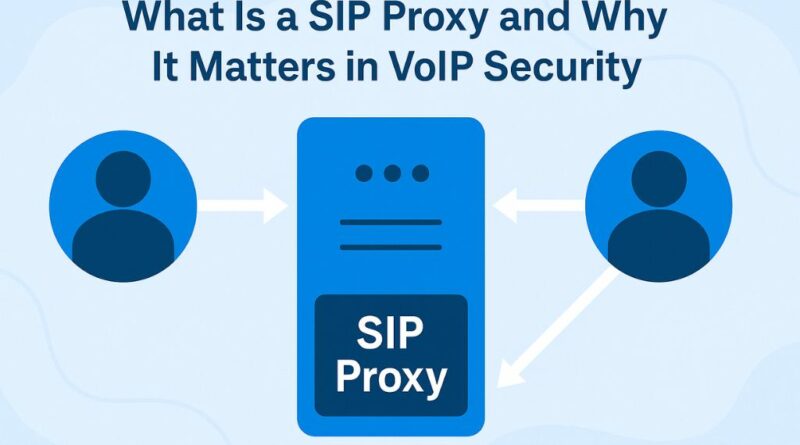What Is a SIP Proxy and Why It Matters in VoIP Security
📘 Introduction
In modern VoIP systems, a SIP proxy plays a central role in managing secure, scalable communications. This article explains what a SIP proxy is, how it works, and why it’s essential for VoIP security.
What Is SIP?
The Session Initiation Protocol (SIP) is a widely used application-layer protocol that initiates, modifies, and terminates multimedia sessions across IP networks. It’s the foundation of many real-time communications platforms, enabling voice, video, and messaging features through structured signalling commands such as INVITE, ACK, and BYE.
What Does a SIP Proxy Server Do?
A SIP proxy server acts as an intermediary that routes SIP messages between user agents (like softphones or IP phones) and core SIP infrastructure. It can operate in either stateless or stateful mode, depending on the complexity and routing needs of the network. Stateless proxies simply forward requests, while stateful proxies track session information, enabling advanced routing and error handling.
When a call is made:
- The SIP INVITE request is sent to the proxy.
- The proxy authenticates the request and forwards it to the intended recipient.
- If accepted, the call is established, and media (e.g. RTP or SRTP) flows directly between the endpoints.
For a technical breakdown, see this session flow explanation by 3CX.
Key Functions of a SIP Proxy
A robust SIP proxy brings multiple benefits to VoIP infrastructure:
- Call routing & load balancing: SIP proxies ensure that signalling requests are intelligently distributed across available servers.
- User authentication: They enforce access policies via credentials and digest authentication protocols like MD5 or TLS-secured signalling (learn more).
- Access control: Proxies can block suspicious IPs, apply ACLs, and enforce rate-limiting.
- Security filtering: Acting as a SIP-aware firewall, the proxy filters malformed requests (e.g. INVITE-of-Death) and ensures protocol compliance.
- Session logging and analytics: Stateful proxies track SIP dialogues, enabling deep diagnostics and reporting.
SIP Proxy vs SBC vs ALG
It’s important to understand how a SIP proxy differs from other common VoIP components:
- A Session Border Controller (SBC) goes beyond signalling to inspect and manipulate media streams (e.g. voice or video), and often handles NAT traversal and topology hiding.
- A SIP ALG (Application-Level Gateway) exists in many consumer routers and modifies SIP headers to help traverse NAT — but often causes more harm than good in modern networks and is typically disabled.
For a deeper comparison, see this technical overview of SIP proxy vs B2BUA.
SIP Proxies & VoIP Security
VoIP systems are vulnerable to threats such as call spoofing, toll fraud, and eavesdropping. A properly configured SIP proxy can significantly reduce this risk by:
- Enforcing TLS encryption for SIP signalling and SRTP for voice streams (read why this matters).
- Blocking malformed or unauthorised SIP requests.
- Applying per-user or per-subnet access control policies.
- Monitoring SIP sessions for anomalous behaviour.
For an overview of common VoIP attack vectors, visit Wikipedia’s VoIP security page.
Best Practices for VoIP Architects
| ✅ Practice | 💡 Why It Matters |
|---|---|
| Use TLS & SRTP | To encrypt signalling and media, protecting against eavesdropping |
| Choose stateful proxies | For robust logging, retry logic, and error handling |
| Implement access policies per IP or user | To control who can initiate or receive SIP messages |
| Combine SIP proxy with SBC when needed | For full NAT traversal, topology hiding, and QoS |
| Disable SIP ALG on routers | Prevents interference with advanced VoIP setups |
🔚 Conclusion
A SIP proxy is the engine room of VoIP signalling. It’s responsible for routing calls, enforcing security, and enabling reliable communication between users and systems. When combined with encryption, SBCs, and good policy management, it forms the cornerstone of a secure, scalable VoIP deployment.
We’d love your questions or comments on today’s topic!
For more articles like this one, click here.
Thought for the day:
“Courage is fear holding on a minute longer.” George S. Patton



